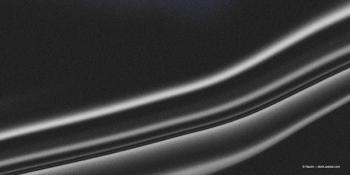
Reasons for switching between agents for wet AMD
Episodes in this series

Caroline Baumal, MD: Mike, you gave us a little bit of insight into how many injections you perform a year. Do you think there is any evidence to support PRN [pro re nata, or as needed] treatment, and do you ever move patients from one treatment regimen to another?
Michael Singer, MD: I do. It is interesting to examine PRN studies because we say the word PRN, but it is not really PRN. With the PRN studies, the patients in the study were still seen every month. They were just not given shots every month. But to speak to Tom’s point, you have got patients who you do not see every month, and they come back, and you extend and bleed. There was a series out of Wills [WillsEye Hospital] that looked at patients who bled within the same month as patients who had anti-VEGF injections. We do not really understand what it is, and atrophy is an issue as well. It has become a discussion with the patient. It is not me telling them what to do, and injection fatigue plays into this. I do believe when we have home monitoring, it is going to be a lot easier to have patients go for longer periods without injections. We have realized, as a result of COVID-19 [coronavirus disease 2019], that we can go without injections a little longer and do a little less, and patients still do OK for the most part.
Caroline Baumal, MD: I will put it out to the panel: What are the things that motivate you to switch to a different agent? How do you judge the treatment effect? Is it usually persistent subretinal fluid or intraretinal fluid that causes you to switch? Do you feel like there is some vision to save? Mike, do you have any thoughts on that?
Michael Singer, MD: I use 3 factors to make a decision as to whether I will switch. The first, most obvious factor to consider is if there is persistent fluid on OCT [optical coherence tomography] after giving 3 injections that are 4 weeks apart. If nothing changes, that is going to motivate me to switch. Another thing that may motivate me to switch agents is the quality of the patients’ objective vision. If patients are seeing and their vision is starting to drop or change, I will consider a change. Of course, I also consider subjective vision. What does the patient say? If they start feeling that they are losing vision on certain medications, even if the OCT looks great and the vision looks great, I may talk about changing the agent with them. If they’ve been getting shots monthly, I may talk about changing that as well. The other issue is extension. When patients say, “Look, I want to go longer without injections, I’m getting too many shots,” I will consider the potential of changing to a different agent, one with better or longer drying ability.
Aleksandra Rachitskaya, MD: When it comes to patients who are not responding to treatment, I take a step back and consider masquerade syndromes. Patients sometimes are just treated with anti-VEGF agents, and they do not respond the way you think they are supposed to. Looking for conditions like CSR [central serous retinopathy], or IPCV [idiopathic polypoidal choroidal vasculopathy] is important. A lot of times you might have a patient who you believe is receiving the best treatment, and they still don’t respond. It is helpful to bring patients back a few weeks after the injection. I’ve had a couple of instances where I bring patients back and they present with the OCT that I’ve been waiting to see. For some patients it just doesn’t last as long.
Thomas Albini, MD: I would also consider third party payers. The insurance companies have something to do with what is available and to what treatment we may switch. That is part of the consideration. Atrophy has become another thing that I consider. If a patient has good vision, but has atrophy, I will attempt to reduce the anti-VEGF exposure and stick with an agent, if the patient is receiving an agent and can tolerate some fluid, if their vision is doing well.
Caroline Baumal, MD: The FLUID study from the group from Australia showed us that patients could tolerate some fluid. Although when we looked at the group that tolerated fluid versus the group that had not been tolerating fluid, there was not much of a difference in the number of anti-VEGF injections between those 2 groups at the end of their study period. There are so many important factors to consider. Polypoidal choroidal vasculopathy is a big imitator of AMD [age-related macular degeneration], and it’s important to recognize those patients because adding photodynamic therapy to the anti-VEGF regimen, as shown in the EVEREST study, may provide the patient with a more durable treatment effect
Newsletter
Keep your retina practice on the forefront—subscribe for expert analysis and emerging trends in retinal disease management.























































